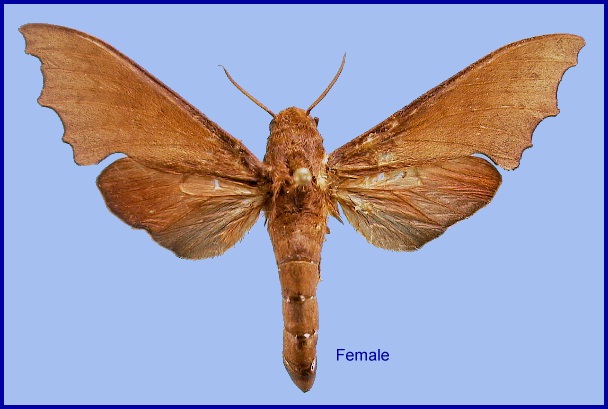
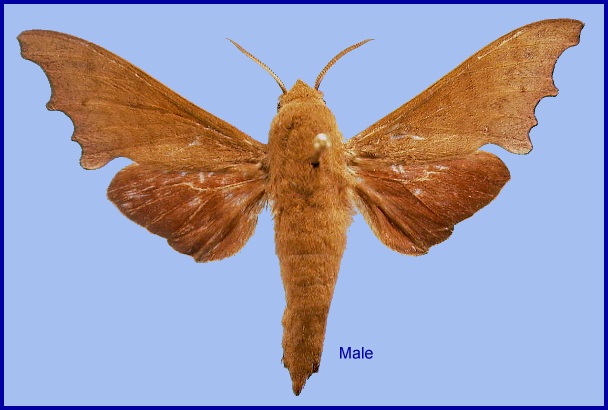
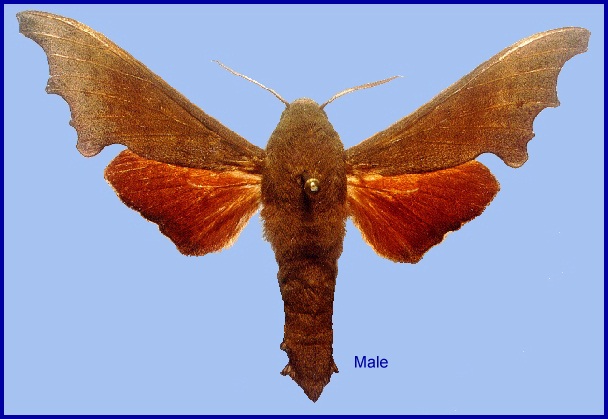
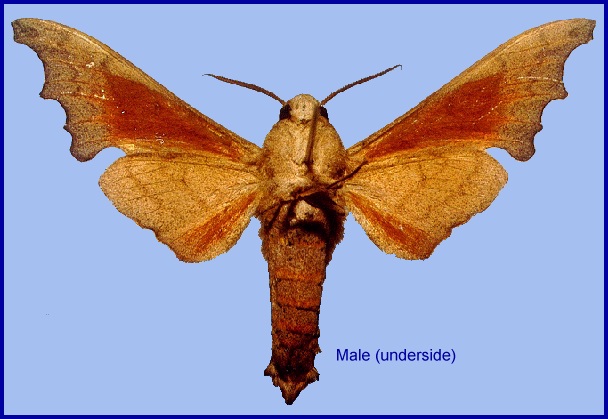
Cypa pallens enodis Jordan, 1931, Novit. zool. 36: 240. Type locality: [India,] Assam [Meghalaya], Shillong.
Wingspan: 65mm. Upperside clay-coloured (almost grey) to cinnamon, with a strong drab or fawn bloom in fresh specimens; hindwing tawny. Underside, basal two-thirds of forewing (except margins) tawny, terminal area greyish, contrasting with the tawny area; hindwing clay-coloured, with a long and prominent tawny smear along abdominal fold. Distal margin of forewing irregular; second segment of palpus very short (Bell & Scott, 1937).
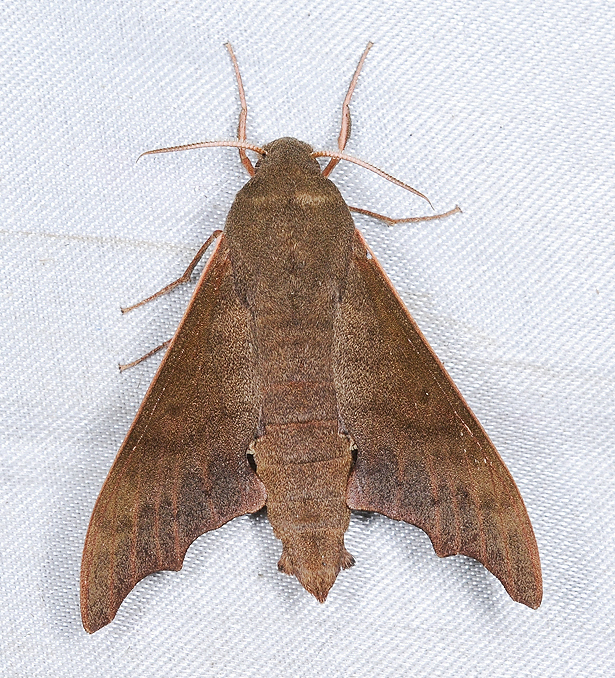
In the Khasi Hills of Meghalaya (formally Assam), India, on the wing at the beginning of the rainy season, at an altitude of 1200-1500 meters (Bell & Scott, 1937). In Taiwan found at 1050-2230m altitude.
China: 20-24.vii (Yunnan); vii (Sichuan). Taiwan: 30.iii (Chiayi Hsien); 13.iv (Nantou Hsien); 5-6.v (Chiayi Hsien); 14-16.vi (Taichung Hsien).
OVUM: Unknown.
LARVA: Full-fed 60mm.; width 9 mm.; horn 7 mm. First to third instars unknown. In the fourth instar, head triangular with a short process rising from apex of each lobe. Body increasing in diameter from segment 2 to 7, then cylindrical. Horn rather short, straight. Colour of head pale green dotted with white tubercles, but processes yellow; with a pale yellow cheek stripe. Body pale green, with a transverse row of small white tubercles around each secondary ring. A broad dorsal stripe, which is dark green edged narrowly with white, runs from segment 2 to the base of the horn. There are seven narrow white oblique lateral stripes. Horn green with white tubercles (Bell & Scott, 1937).
In the final and fifth instar, head elongate triangular, 7mm long by 4.5mm broad, with a short process rising from the apex of each lobe, these processes closely appressed to near tips. Clypeus about one-third length of head, apex acute, basal angles rounded. False clypeus very narrow; labrum about one-half length of clypeus, slightly broader than clypeus, divided into five squares by longitudinal channels. Ligula slightly longer and narrower than labrum, kidney-shaped, lobes rounded, with a channel down each lobe, these channels meeting above apex of sinus. Face shiny and superficially transversely wrinkled; cheek dull; the whole surface of head, including processes, covered sparsely with small, round, smooth, setiferous tubercles. Body segment 2 much lower than head segments, increasing in diameter from 2 to 7; rest of body nearly cylindrical. Horn of medium length, gently down-curved, stout at base and tapering evenly to a blunt, bifid tip. Surface of body dull, with a transverse row of very small tubercles around each secondary ring. Horn covered with larger tubercles; anal flap covered with small tubercles and one large subdorsal tubercle (Bell & Scott, 1937).
In colour, face of head bluish-green. Cheek pale green with white tubercles, processes yellow. A narrow whitish stripe, edged inside with dark green, runs from the base of each process to the base of the antenna, separating face from cheek. A broad dark green dorsal stripe runs from the head vertex to nape. Body segments 2 to 4 pale green, rest of body darker green; tubercles white. There is a broad dorsal stripe, dark green on 2 to 6, then greenish-brown to base of horn, edged below by a diffused white stripe and broken at segment margins. The seven narrow oblique lateral stripes are white or pale yellow, edged narrowly above by reddish-brown, that on 11 more prominent than the rest and running back to base of horn. Horn green with brown tubercles. True legs green, end-segment reddish; prolegs and claspers green, anal flap green, the small tubercles brown and the large subdorsal one green. Spiracles oval, with the central slit whitish, edged on each side with greenish-brown, the whole enclosed in a larger oval of pale green (Bell & Scott, 1937).
The larva raises the head and front segments when resting or alarmed, and strikes sideways with the head. Pupation takes place underground.
PUPA: 30mm. Brown in colour, but head, thorax and wing-cases of a darker shade. Surface smooth and shiny. Slender in build; head very small, the eye very low and near front of pupa. Tongue shorter than fore leg and antenna. Cremaster channelled dorsally and ventrally, with two small dorso-lateral teeth, one near the base, one near the tip (Bell & Scott, 1937).
Larval hostplants. Betula alnoides in India (Bell & Scott, 1937).
Unknown.
China: Hubei (Badong); Sichuan (Qi Xian; Ya'an); Yunnan (Lancang; Ruili; Simao/Pu'er; Malipo County, Wenshan Zhuang; Luquan County, Kunming); Guizhou (Leishan); Guangxi (Maoer Shan, 1800m); Hainan (Jianfeng).
Taiwan: Chiayi Hsien (Shihtzulu, 1520m; Kaohsiung City, Taoyuan District); Taichung Hsien (Tashiiehshan, Anmashan, 2230m; Daxueshan National Forest Recreation Area, 2287m); Nantou Hsien (Renluen, 1400m; Wangxiang, Xinyi, 2300m).
Nepal, Bhutan, northeastern India (Sikkim; Meghalaya; Mizoram), Burma/Myanmar (Kayin), Thailand (Mae Hong Son), southern China, northern and central Vietnam (Sa Pa; Quang Nam; Kon Tum; Lai Chau; Lao Cai; Lang Son; Thua Thien Hue; Gia Lai) (Le & Vu, 2024), northern Laos (Houaphan; Phonsavanh), Taiwan and Peninsular Malaysia (Genting Highlands).
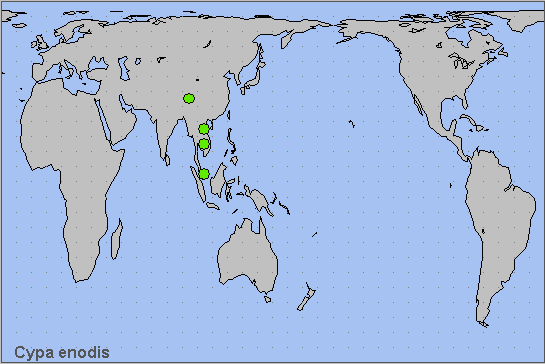
 Return to Sphingidae of the Eastern Palaearctic species list
Return to Sphingidae of the Eastern Palaearctic species list